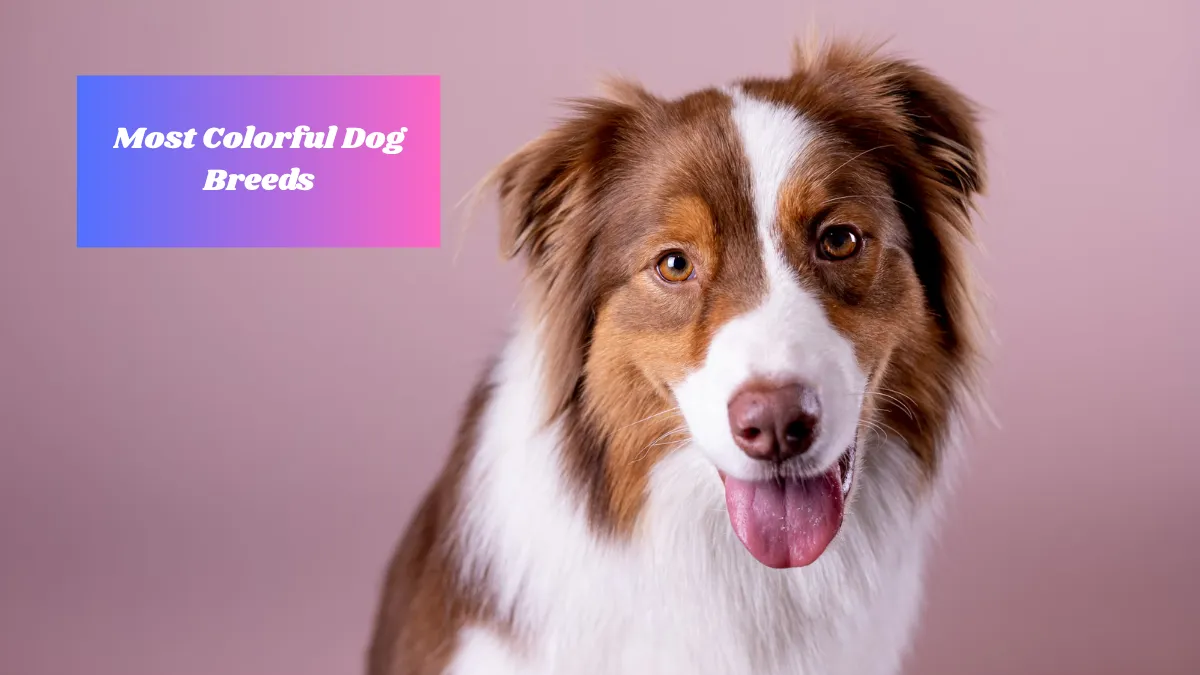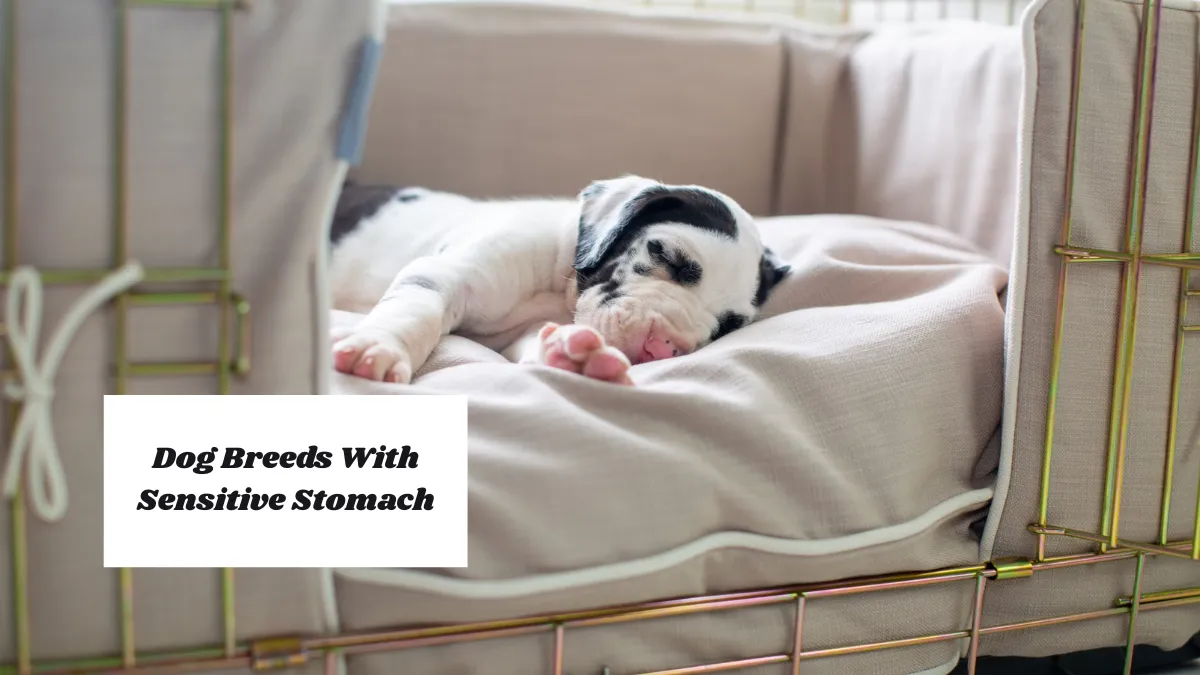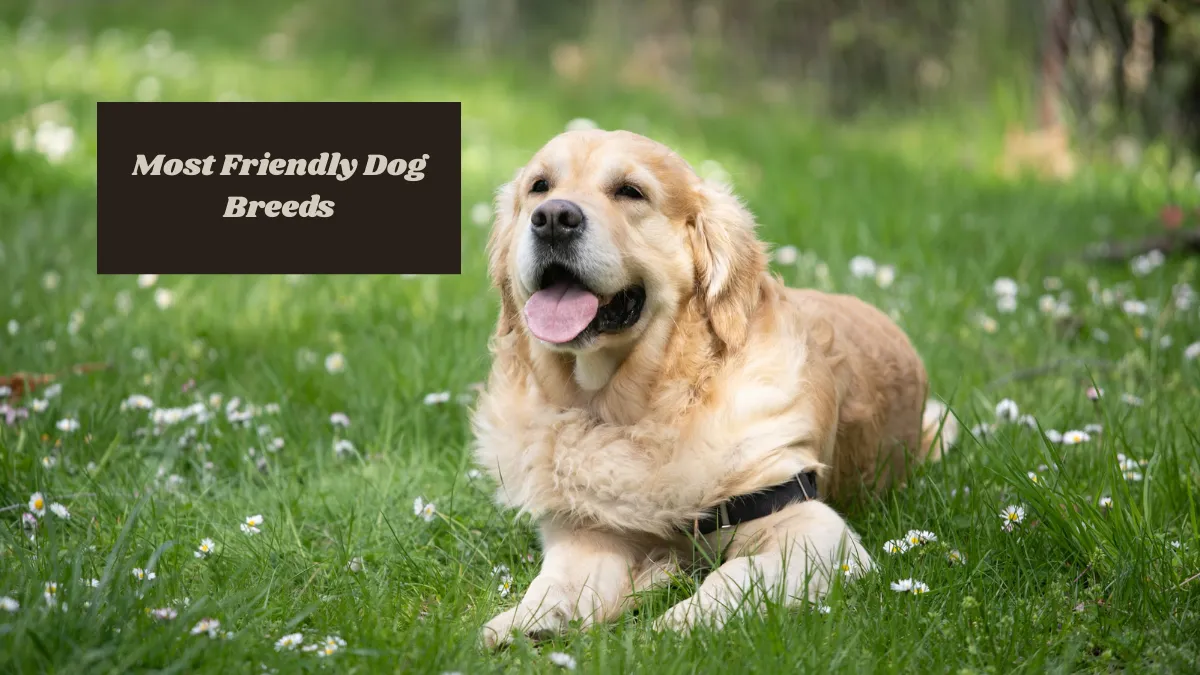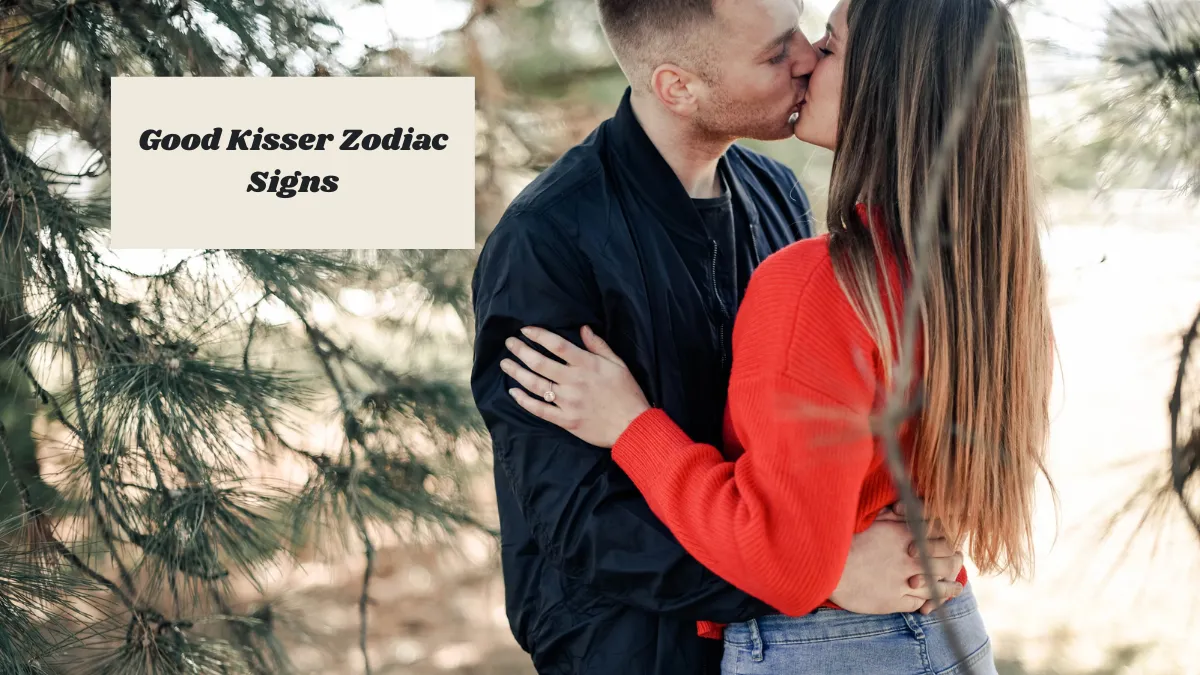Dogs not only bring joy, warmth, and companionship into our lives—they often add a splash of color, too. Many breeds have eye-catching coats thanks to unique genetics. Specific genes produce pigments like eumelanin (black or brown) and phaeomelanin (red or yellow), resulting in a wide array of fur colors and patterns.
Dog coats can come in everything from merle and harlequin patterns to solid shades of brown, red, gold, cream, and black. One of the most striking patterns is the tricolor coat, which includes three distinct shades that can appear in various combinations across the body.
Some breeds, like Dalmatians, are famous for their bold black spots on a white coat. Others, such as the Saint Bernard, have distinct color placements like rust on the back, dark patches on the face, white markings, and unique paw colors.
Take a look at seven of the most vibrantly colored dog breeds that every dog enthusiast should know about.
Most Colorful Dog Breeds
1. Australian Shepherd
These energetic and intelligent dogs are known for their playful nature and charming looks. The Australian Shepherd has a dense double coat that helps protect it from extreme climates. A coarse underlayer supports a wavy, long outer coat, giving it a fluffy and rugged appearance.
Australian Shepherds are typically found in red, red merle, black, and blue merle. Their striking hazel or amber eyes enhance the beauty of their dark and merle coats. Unique variations include diluted versions of standard colors caused by recessive genes that lighten fur color.
Some Aussies are yellow, ranging from pale lemon to a deep golden hue, inherited through two recessive yellow genes. Double merles lack pigmentation in areas like their skin, nose, and eyelids. While many double merles suffer from vision or hearing loss, not all are affected. Another distinct version is the red merle with marbled eyes, where specks of blue and brown mix in fascinating ways. Regardless of color, Aussies win hearts with their affectionate nature.
2. Border Collie
Known for their boundless energy and intelligence, Border Collies often display the classic black-and-white coat. However, these agile herders come in a variety of shades. You’ll find rare versions like blue, slate merle, lilac, and gold red. These dilute tones stem from recessive genetics similar to those seen in other breeds.
Interestingly, lilac Border Collies result from a dilute gene acting on a red coat. You can also spot some with brindle patterns, seal, sable merle, and even red brindle coats. Though originally bred to herd sheep in the UK, Border Collies today are valued as both working dogs and loving pets. They need substantial physical activity, requiring at least two hours of exercise daily to stay healthy and happy.
3. Dachshund
Compact yet bold, Dachshunds are easily recognized by their long bodies and short legs. Originally bred for hunting, these “wiener dogs” are packed with energy and fearlessness. They have three coat varieties: long-haired, short-haired, and wire-haired, each with specific grooming needs.
The American Kennel Club acknowledges fifteen Dachshund colors, though only twelve are deemed standard. Coat patterns like sable, piebald, brindle, and dapple also occur. Less common but visually striking are the double brindle and double dapple types.
Their classic appearance is the black and tan Dachshund, characterized by a black coat with tan highlights on the eyebrows, chest, feet, and muzzle. Unique shades like blue, red, and Isabella are rarer. The Isabella variety, sharing genetic similarities with lilac Border Collies, is caused by inheriting two recessive dilute genes from both parents.
4. Cocker Spaniel
Cocker Spaniels, popular for their sweet demeanor, were originally bred for flushing game birds, particularly woodcocks. Their name reflects this hunting history. These dogs have a flat, silky coat that is neither overly curly nor heavy. Weekly grooming of at least a few hours is essential to maintain its condition.
They come in solid colors such as red, golden, buff, and black. While these are termed “solid,” slight white markings like a small chest patch are acceptable. The presence of a recessive gene can result in a parti-colored coat, even in dogs that mostly exhibit solid coloring.
If a solid-colored Cocker Spaniel inherits two dominant solid genes, it will always produce solid-colored offspring, even when bred with a parti-colored mate. These dogs are charming, loyal, and great for families—but be cautious when walking them through areas with burrs, which may tangle their coat.
5. English Setter
This elegant breed has a rich background dating to the 19th century and was developed for bird hunting and retrieval. English Setters are admired for their luxurious, flowing coats and gentle nature. Their coats are often white with colored speckling—also known as “ticking”—in shades like black, lemon, orange, and blue.
Due to selective breeding in the early days, some colors such as lemon and chestnut became rare because breeders believed them to be inferior. Thus, finding puppies with these colors today can be challenging. Another notable pattern is the chestnut belton, named after the village of Belton, associated with the breed’s founder Edward Laverack.
Belton Setters feature evenly speckled coats without large patches. When two ticking colors combine with white, they create tricolor coats, producing combinations like blue and orange, chestnut and orange, or lemon and orange. These dogs are not only colorful but also loving companions.
6. Merle Pomeranian
With their luxurious, cloud-like double coat, Pomeranians are known for their glamorous appearance and spirited personality. The merle variation adds a striking dimension. While merle itself isn’t a color, it refers to a pattern that creates a marbled or splashed look on a colored base coat.
You can find blue merle, chocolate merle, red merle, and white merle Pomeranians. Those with mostly solid coats and merle patches are often referred to as parti-merles. The merle pattern is dominant, meaning at least one merle parent is required to pass it on.
Merle Poms can have eye colors ranging from bright blue to brown, and even deep sapphire. Their paw pads and noses often show a speckled black-and-pink pattern, adding even more visual interest. These tiny dogs may be small in size, but they are certainly big on beauty and personality.
7. Cardigan Welsh Corgi
These sturdy, low-set dogs are full of character and charm. Cardigan Welsh Corgis are distinguishable by their long bodies, fluffy tails, and medium-length double coats. Their coats come in colors such as red, black, brown, tricolor, and blue merle, often adorned with white accents across the neck, chest, muzzle, and tail tips.
You’ll also find variations like sable and brindle, and many have a white blaze running across their heads that doesn’t extend around the eyes. Merle-coated Corgis may have blue eyes or mismatched eyes, which adds to their unique appearance.
According to the American Kennel Club, only black noses are accepted in this breed. However, blue merles may have a butterfly nose—a nose that’s partially pink—which is tolerated despite being less typical. Corgis are loyal and affectionate, making them excellent family pets as well as show-stoppers.
Final Thoughts on Colorful Dog Breeds
Across the dog world, there are many breeds with stunning coat colors and intricate patterns that captivate our attention. These unique dogs don’t just look beautiful—they often have amazing personalities to match. Whether you’re drawn to merles, ticked patterns, tricolors, or solids, there’s a colorful companion out there for you. Before welcoming one into your life, be sure to understand their grooming requirements to keep their coats healthy and radiant.



